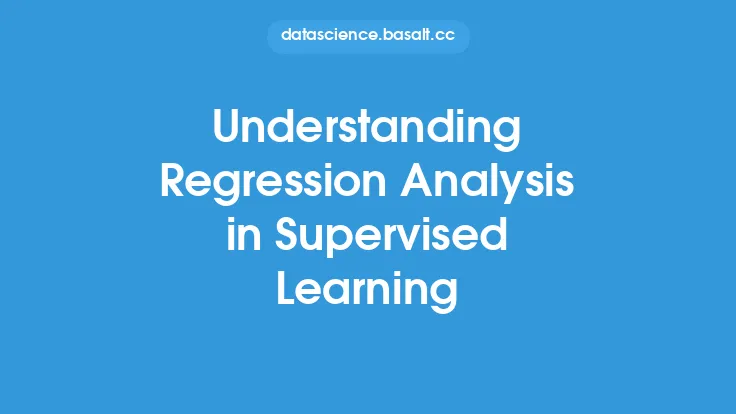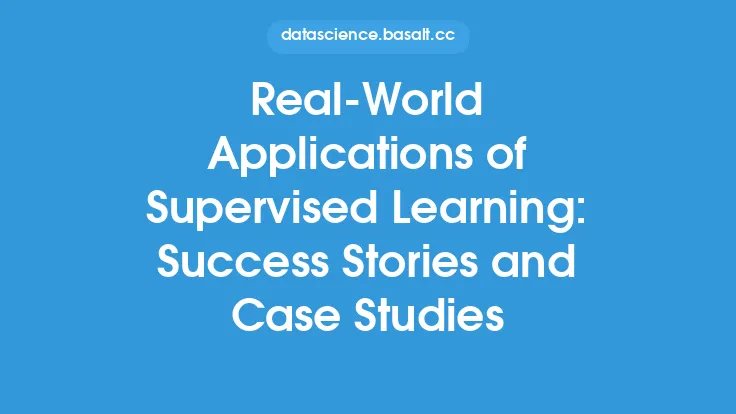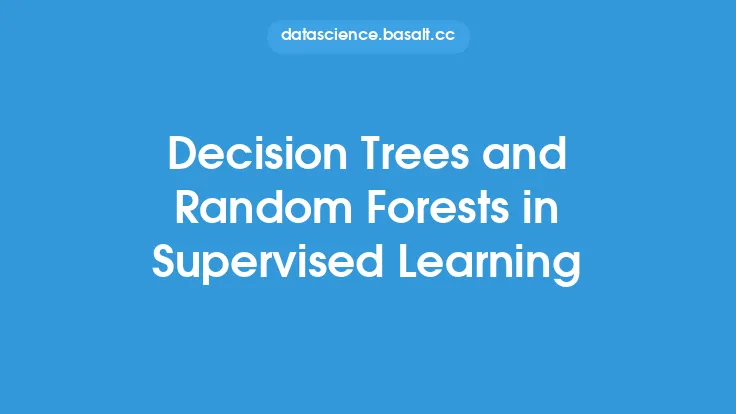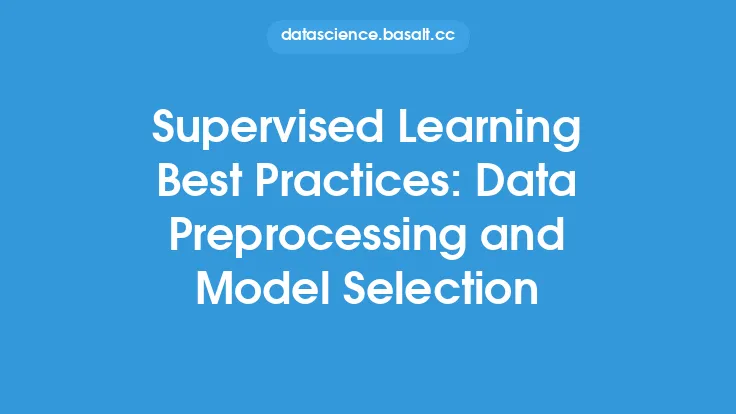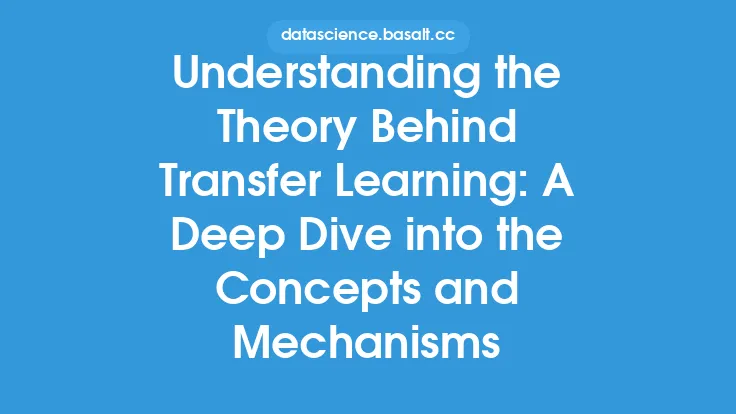Supervised learning is a fundamental concept in machine learning, where the goal is to learn a mapping between input data and the corresponding output labels. Among the various supervised learning algorithms, linear regression is one of the most widely used and well-established methods. In this article, we will delve into the theory and applications of linear regression, exploring its underlying principles, mathematical formulations, and real-world applications.
Introduction to Linear Regression
Linear regression is a linear approach to modeling the relationship between a dependent variable (target variable) and one or more independent variables (features). The goal of linear regression is to find the best-fitting linear line that minimizes the difference between the observed and predicted values. This is achieved by learning a linear function that maps the input features to the target variable. The linear function is typically represented as a linear combination of the input features, with coefficients (weights) that are learned during the training process.
Mathematical Formulation of Linear Regression
The mathematical formulation of linear regression can be represented as follows:
Let's consider a dataset consisting of n samples, each with p features (independent variables) and a target variable (dependent variable). The dataset can be represented as:
{(x1, y1), (x2, y2), ..., (xn, yn)}
where xi is the i-th sample and yi is the corresponding target variable.
The linear regression model can be represented as:
y = β0 + β1x1 + β2x2 + … + βpxp + ε
where β0 is the intercept or bias term, β1, β2, …, βp are the coefficients (weights) of the features, and ε is the error term.
The goal of linear regression is to find the optimal values of the coefficients (β0, β1, β2, …, βp) that minimize the sum of the squared errors between the observed and predicted values.
Ordinary Least Squares (OLS) Estimation
The most common method for estimating the coefficients in linear regression is Ordinary Least Squares (OLS). OLS estimates the coefficients by minimizing the sum of the squared errors between the observed and predicted values. The OLS estimator can be represented as:
β = (X^T X)^-1 X^T y
where X is the design matrix, y is the target variable, and ^T denotes the transpose.
Assumptions of Linear Regression
Linear regression assumes that the data meets certain conditions, including:
- Linearity: The relationship between the independent variables and the dependent variable should be linear.
- Independence: Each observation should be independent of the others.
- Homoscedasticity: The variance of the error term should be constant across all levels of the independent variables.
- Normality: The error term should be normally distributed.
- No multicollinearity: The independent variables should not be highly correlated with each other.
Applications of Linear Regression
Linear regression has a wide range of applications in various fields, including:
- Predicting continuous outcomes: Linear regression can be used to predict continuous outcomes, such as stock prices, temperatures, or energy consumption.
- Analyzing relationships: Linear regression can be used to analyze the relationships between variables, such as the relationship between the price of a product and its demand.
- Identifying factors: Linear regression can be used to identify the factors that affect a particular outcome, such as the factors that affect the price of a house.
- Forecasting: Linear regression can be used to forecast future outcomes, such as forecasting sales or revenue.
Regularization Techniques
Regularization techniques are used to prevent overfitting in linear regression models. Overfitting occurs when a model is too complex and fits the noise in the training data, resulting in poor performance on new, unseen data. Regularization techniques, such as L1 and L2 regularization, add a penalty term to the loss function to discourage large weights and prevent overfitting.
Linear Regression with Multiple Features
Linear regression can be extended to handle multiple features by using a design matrix X, where each row represents a sample and each column represents a feature. The linear regression model can be represented as:
y = β0 + β1x1 + β2x2 + … + βpxp + ε
where β0 is the intercept or bias term, β1, β2, …, βp are the coefficients (weights) of the features, and ε is the error term.
Computational Complexity
The computational complexity of linear regression depends on the size of the dataset and the number of features. The time complexity of linear regression is O(n^2) for the OLS estimator, where n is the number of samples. However, this can be reduced to O(n) using more efficient algorithms, such as the QR decomposition or the singular value decomposition.
Conclusion
Linear regression is a fundamental algorithm in supervised learning, widely used for predicting continuous outcomes and analyzing relationships between variables. Its mathematical formulation, based on the ordinary least squares estimator, provides a simple and efficient way to learn a linear mapping between input features and a target variable. While linear regression has many applications, it also has limitations, such as the assumption of linearity and the risk of overfitting. Regularization techniques, such as L1 and L2 regularization, can be used to prevent overfitting and improve the performance of linear regression models. Overall, linear regression remains a powerful and widely used algorithm in machine learning, with many applications in various fields.

